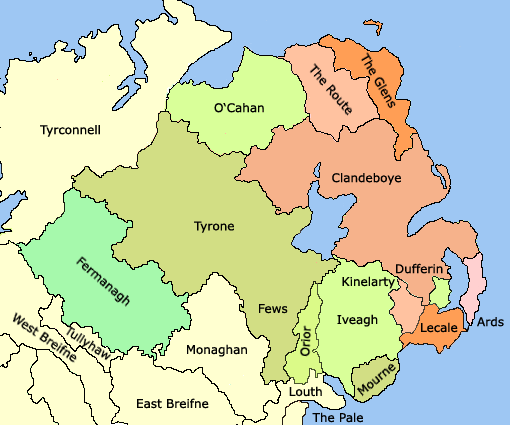A kingdom, which wasn't a kingdom, finally gets a king to rule them all.
In the battle to end all wars and unite the kingdom, the king is victorious, but also very dead.
Brian “Bóruma” mac Cennétig was born around 941 to Cennétig mac Lorcáin, King of the Dál Cais clan, which ruled over Tuadmumu (Thomond), one of the many kingdoms in the island of Ireland. Tuadmumu was a subkingdom in the Kingdom of Muma. 1/10

Since fifth century AD, five kingdoms had controlled major parts of Ireland – Ulaid (Ulster), Connacht (Connaught), Mide (Meath), Laigin (Leinster) and Muma (Munster). The most powerful among the rulers were the Uí Néill family who ruled Meath and northwest Ireland. 2/10

However, this changed with the arrival of Norsemen in tenth century. They settled in Ireland and set up their own regions of control, especially in the Norse kingdom of Dublin. Limerick, close to Brian's homeland, also fell under Norse control. 3/10

Munster was ruled by the Eóganachta family, but Brian's grandfather, Lorcáin, and father, Cennétig, attempted to dislodge the Eóganachta from Munster. Many of Brian's elder brothers apparently died during the battles for control of Munster. 4/10

In 951, Cennétig died and was succeeded by his son, Lachtna. but he too died in 953. Another of Brian's brothers, Mathgamain, became the king. Mathgamain, supported by his brother Brian, was able to dislodge the Eóganachta from their capital of Cashel. 5/10

Mathgamain also defeated the Norse of Limerick in 968, but they allied with Eóganachta and captured and killed Mathgamain in 976. Brian succeeded as king and got his revenge soon. He defeated the Norse in 977 and Eóganachta in 978 and took control of their territories. 6/10

Brian extended his control over Munster and began to work on expanding it. He invaded neighbouring Osraige and Connaught, but had to face a counter invasion by Máel Sechnaill mac Domnaill, King of Meath and the then High King of Ireland. 7/10

Both sides had victories and defeats but in 997 the two made peace dividing up Ireland between themselves, with Brian getting the southern half, including Leinster. In the meantime, Brian had developed a formidable navy which he put to use against Norse ruled Dublin. 8/10

In 1002, Brian took over as High King of Ireland from Máel Sechnaill. But he had the difficult task of bringing Ulster and the Northern Uí Néill family under his control. By 1011, Brian quelled multiple rebellions and brought the north also under his control. 9/10

However, he soon had to deal with another rebellion. Leinster and Dublin rebelled, reinforced by the Norse from Britain. Brian's sons, Murchad and Domnall, likely led the battle, which ended in victory, though Brian, Murchad and Murchad's son, Toirdelbach, met their deaths. 10/10

Originally tweeted by Ranjith Kollannur (@Arby_K) on October 7, 2022.
Brian “Bóruma” mac Cennétig, King of Tuadmumu (976-1014), King of Munster (978-1014), High King of Ireland (1002-1014) – King Brian broke the Uí Néill domination of Ireland and managed to bring a level of unity of the whole of Ireland, including the Norse controlled regions. His death led to his predecessor return as High King, but he could not retain the same level of control and the Normans found things easier to handle when they invaded later in the century. However, King Brian’s retained a strong role in Tuadmumu (Thomond) where his descendants ruled as Earls after submitting to King Henry VIII of England centuries later.































